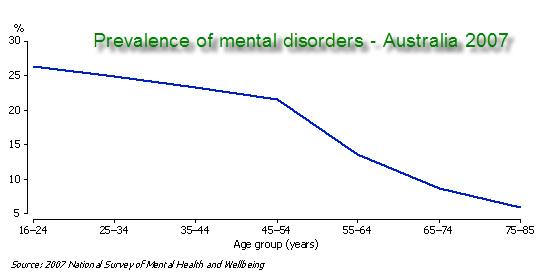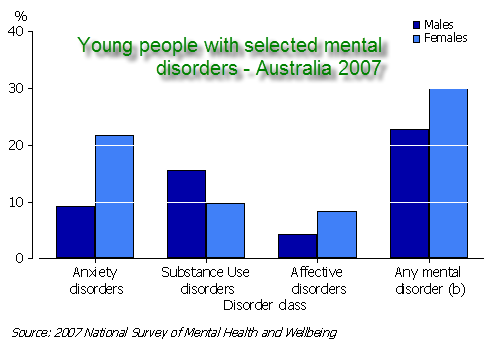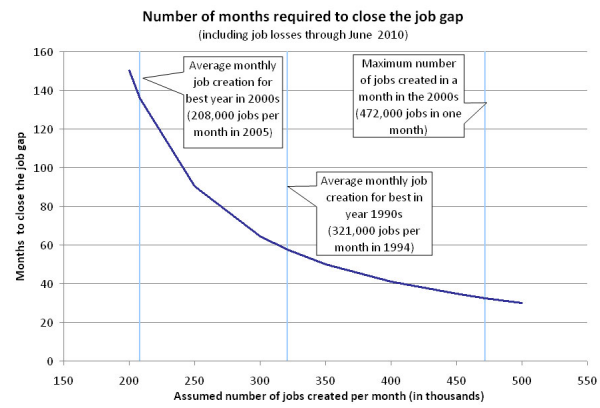Perhaps it’s because they don’t all vote. A depressing and distressing report this morning from the Australian Bureau of Statistics. A survey of the mental health of young people shows that one in four Australians aged 16–24 years had a mental disorder in 2007. Yet while the bureau found that the prevalence of mental illness is relatively high in young people, they have a relatively low use of mental health services. Just under a quarter of young people with a mental disorder had used mental health services in the previous year. Young people with a severe level of impairment were more likely to use mental health services (51%) than those those with milder levels of impairment (18%). General practitioners were the service most frequently accessed by young people with a mental disorder (15%) followed by psychologists (10%).


It would be nice to think that the release of this survey would put mental health on the election agenda but somehow I doubt it. Not enough of the afflicted vote.
Bring back Tom Uren. All this sustainable cities stuff that Julia Gillard has started her campaign off with is a very pale imitation of two previous ventures into the area of urban development by a Labor government. Back in the Whitlam years we had the full-scale decentralisation approach with the creation of a Department of Urban and Regional Development but Treasury eventually killed off that escapade as soon as a coalition government returned. Then in the early 1990s it was Brian Howe’s turn as deputy Prime Minister to develop a Better Cities program that did not last much longer. Will the Gillard government’s proposals to spend a couple of hundred million achieve anything more than its predecessors?
Panda-ing to Bob.That German octopus has a lot to answer for. We clearly are going to be in for a round of animal selections to go with the polls this election. The Advertiser got us under way this morning with its panda poll direct from the Adelaide zoo where the giant panda Funi picked Greens leader Bob Brown as her first choice.

It’s probably as reliable a guide as any of the weekend’s opinion polls.
Disappearing Himalayan glaciers: believe your eyes. Much fuss was made by some of the disbelievers in a warming world because of a bit of sloppy work by the Intergovernmental Panel on Climate Change (IPCC) when it wrote of disappearing Himalayan glaciers. The evidence quoted by the IPCC was not spot on and the inadequacy was seized upon to suggest that the claim was completely false. Which is what makes the Rivers of Ice exhibition currently being staged in New York by the Asia Society such an important contribution to the global warming debate. It shows a series of pictures by photographer and mountaineer David Breashears, who with Glacier Research Imaging Project (GRIP), has retraced the steps of renowned mountain photographers of the past century to recapture images of Himalayan mountains and their glaciers from exactly the same vantage points. Rivers of Ice — Vanishing Glaciers of the Greater Himalaya displays his recent photographs alongside the corresponding historic images, revealing the alarming loss in ice mass that has taken place over the intervening years.

The West Rongbuk Glacier in 1927

The West Rongbuk Glacier in 2009
Who knows about double dip but slow progress in the US. The speculation goes on in the United States about whether or not the country is in for a double dip recession but there seems to be growing agreement that slow economic growth means it is going to take quite a long time before the unemployment level returns to where it was before the international financial crisis. This graph from a paper published by Washington’s Brookings Institute shows the sad nature of current forecasts.

If future job growth continues at a rate of roughly 208,000 jobs per month, the average monthly job creation for the best year for job creation in the 2000s, it would take 136 months (more than 11 years) to return to employment levels from before the Great Recession. In a more optimistic scenario, with 321,000 jobs created per month, the average monthly job creation for the best year in the 1990s, it would take over 57 months (almost five years).







The liberals made access to mental health practitioners a little easier, if I remember rightly, by making psychologist visits covered under medicare and now they want to spend more money on mental health. This doesn’t sit well with me i.e. it confuses me knowing that T.A. actually has compassion for those who are not as fortunate as he is … where is this good policy coming from and why isn’t it coming from Labor????